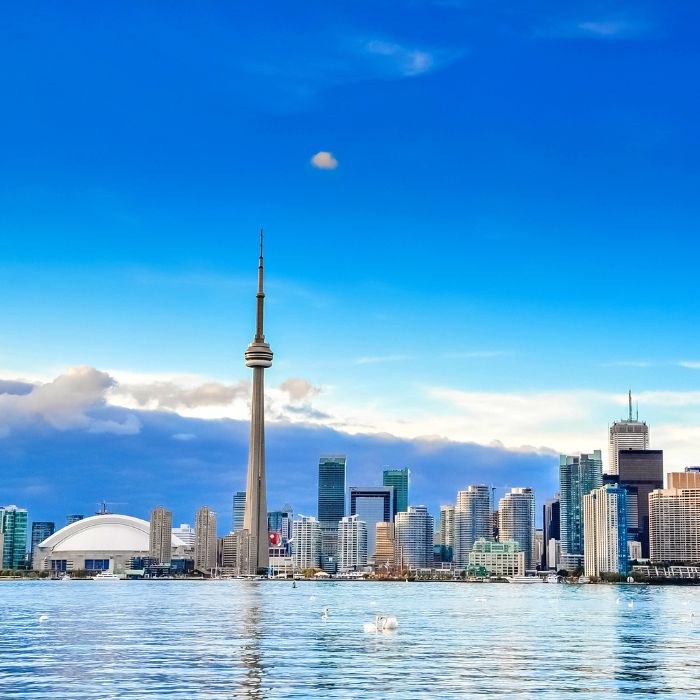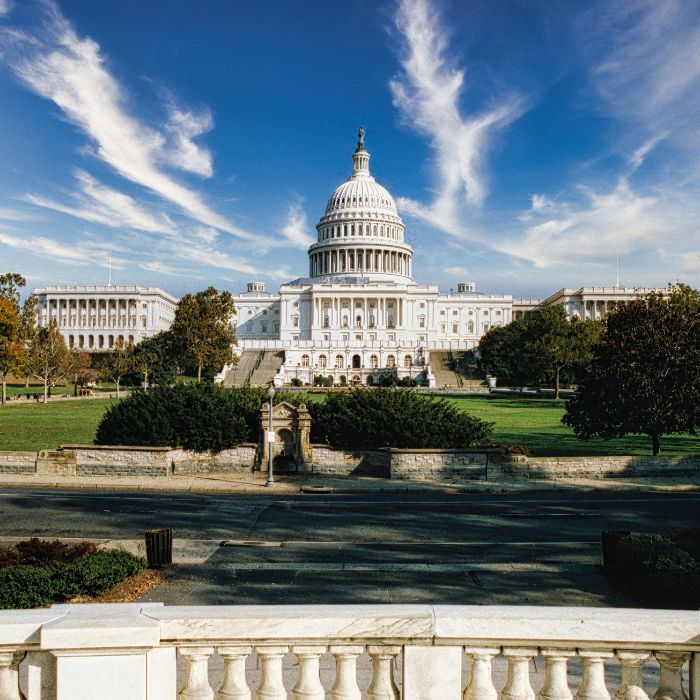Navigating Tariffs, Talent and Trade: The Automotive Industry Faces a Defining Moment
May 1, 2025

Country / Territory
Related contacts
Related industries
Related offices
Related contacts
Related industries
Related offices
Related contacts
Related industries
Related offices
As the US administration moves through a critical phase of its economic and trade agenda, the North American automotive industry continues to navigate a landscape of uncertainty—and emerging opportunity. Deeply integrated across the United States, Canada and Mexico, the automotive sector is exposed to shifts in trade and immigration policy. With new tariffs already in motion and major trade negotiations looming, automakers are being forced to rethink strategies, recalibrate supply chains, and reconsider their workforce models.
Why Tariffs Hit Automakers Hard
Since the North American Free Trade Agreement (NAFTA) took effect in 1994, the continent’s automotive supply chain has become highly interconnected. Vehicles assembled in the US routinely include parts manufactured in Canada and Mexico—and vice versa. This collaborative production model has driven efficiency and cost savings across the region.
Today, industry experts predict that the imposition of tariffs on cross-border components threatens this balance. And they have warned that new trade barriers could upend the supply chain, halt production at key facilities, and add thousands of dollars to the price of new vehicles. As a result, many automakers and suppliers have been stuck in a holding pattern, postponing investments and hiring decisions as they await clearer direction on trade policy.
A Partial Relief: New Executive Orders
On April 29, 2025, the president signed two executive orders aimed at softening the impact of auto-related tariffs and providing manufacturers with some degree of certainty regarding tariffs going forward.
Key Provisions Include:
-
- Reimbursement Credits for Imported Auto Parts through April 2027:
For automobiles that undergo final assembly in the United States, automakers are eligible to receive credits to offset tariffs paid on imported components. The credit begins at 3.75% of a vehicle’s value in the first year, declining to 2.5% in the second year and ending thereafter. This phased approach is designed to provide temporary relief while encouraging manufacturers to increase domestic sourcing of auto parts. - Non-Stacking of Tariff Measures:
Automakers paying the 25% tariff on imported vehicles will be exempt from additional tariffs on parts and materials such as steel, aluminum and key components.
- Reimbursement Credits for Imported Auto Parts through April 2027:
According to the administration, these executive orders are intended to provide automakers with sufficient clarity to move forward with delayed capital projects and supply chain realignments.
Trade Policy in Flux: The USMCA Factor
Adding to the uncertainty is the upcoming renegotiation of the United States-Mexico-Canada Agreement (USMCA), scheduled for early 2026. As NAFTA’s successor, the USMCA underpins much of the region’s trade framework.
The TN nonimmigrant category, which allows Canadian and Mexican professionals to work in the US with minimal red tape, emanates from the USMCA. This category is critical to the auto industry in Detroit and other manufacturing hubs. During the last round of negotiations, the immigration sections of the agreement remained untouched—but there’s no guarantee of the same outcome this time. Accordingly, some companies have pursued contingency plans, such as entering TN professionals in the H-1B Cap Lottery or converting them to L-1 intracompany transferee status where possible.
A Growing Demand for STEM Talent
The administration has stated that tariffs are intended to spur domestic automotive manufacturing. There are some signs that this is already occurring. In recent years and specifically since the presidential election, several major automakers have pledged billions in new U.S. investments, some citing evolving trade policies as a factor. Over the next several years, if companies pivot to building more vehicles entirely within the US, demand for STEM professionals—engineers, supply chain analysts, automation experts—will increase accordingly.
What’s Next?
The next several months could prove defining for the North American automotive sector. Tariff implementations, trade deal revisions, and immigration policies are converging in ways that could reshape the landscape for years to come.
Automakers must prepare for a range of possible outcomes. Agility in supply chain design, proactive immigration planning, and investment in US-based production capacity will be critical to staying competitive.
Need to know more?
For further information on immigration trends in the automotive industry, please contact Partner Christian Dallman at [email protected].
This blog was published on May 1, 2025, and due to the circumstances, there are frequent changes. To keep up to date with all the latest updates on global immigration, please subscribe to our alerts and follow us on LinkedIn, Twitter, Facebook and Instagram.
Country / Territory
Related contacts
Related industries
Related offices
Related contacts
Related industries
Related offices
Related contacts
Related industries
Related offices
Explore more at Fragomen

Media mentions
Partner Jill Bloom explains how the new wage-based H-1B selection rule may influence hiring decisions and prompt employers to reassess workforce planning and explore alternative visa options.

Media mentions
Partner K. Edward Raleigh discusses how companies are rethinking their H-1B strategies amid evolving policies.

Awards
Senior Counsel Mitch Wexler is recognized by EB5 Investors Magazine as a 2025 Top 25 award recipient, reflecting leadership and long-standing impact in the global investment immigration space.

Blog post
Partners Isha Atassi and Rahul Soni outline key considerations across the EB-5 Immigrant Investor Program and the US Gold Card, comparing eligibility, investment structures and risk factors for high-net-worth individuals from the Middle East seeking US permanent residence.

Media mentions
Partner K. Edward Raleigh commented on proposed changes to US entry requirements.

Video
Business Immigration Consultant Marisa Gizzi from Fragomen explains everything about the Schengen C Visa: who needs it, how to apply and key travel tips to stay compliant in the Schengen Area.

Media mentions
Partner Rick Lamanna discussed Canada’s $1B plan to attract global researchers.

Blog post
Manager Alex Hood, Senior Associate Kimberley Ong and Immigration Paralegal Ataa Rajput explain the final extension and settlement deadlines for UK Tier 1 Investor visa holders and outline who can still qualify and why early action is essential.

Media mentions
Partner K. Edward Raleigh on how the $100K H‑1B fee factors into hiring international talent.

Media mentions
Managing Director Magdalene Tennant and Director Kitty Lo highlight Hong Kong as an attractive destination for global investors.

Blog post
IPM Business Process Manager Hazel Yaman outlines key visa, work authorisation and border considerations for athletes, media, event staff and spectators travelling to Italy for the Milan–Cortina 2026 Olympic and Paralympic Winter Games, including the impact of the EU’s new Entry/Exit System.

Media mentions
Corporate Services Director Elena Caron highlights key considerations for UK nationals moving to the UAE.

Media mentions
Partner Jill Bloom explains how the new wage-based H-1B selection rule may influence hiring decisions and prompt employers to reassess workforce planning and explore alternative visa options.

Media mentions
Partner K. Edward Raleigh discusses how companies are rethinking their H-1B strategies amid evolving policies.

Awards
Senior Counsel Mitch Wexler is recognized by EB5 Investors Magazine as a 2025 Top 25 award recipient, reflecting leadership and long-standing impact in the global investment immigration space.

Blog post
Partners Isha Atassi and Rahul Soni outline key considerations across the EB-5 Immigrant Investor Program and the US Gold Card, comparing eligibility, investment structures and risk factors for high-net-worth individuals from the Middle East seeking US permanent residence.

Media mentions
Partner K. Edward Raleigh commented on proposed changes to US entry requirements.

Video
Business Immigration Consultant Marisa Gizzi from Fragomen explains everything about the Schengen C Visa: who needs it, how to apply and key travel tips to stay compliant in the Schengen Area.

Media mentions
Partner Rick Lamanna discussed Canada’s $1B plan to attract global researchers.

Blog post
Manager Alex Hood, Senior Associate Kimberley Ong and Immigration Paralegal Ataa Rajput explain the final extension and settlement deadlines for UK Tier 1 Investor visa holders and outline who can still qualify and why early action is essential.

Media mentions
Partner K. Edward Raleigh on how the $100K H‑1B fee factors into hiring international talent.

Media mentions
Managing Director Magdalene Tennant and Director Kitty Lo highlight Hong Kong as an attractive destination for global investors.

Blog post
IPM Business Process Manager Hazel Yaman outlines key visa, work authorisation and border considerations for athletes, media, event staff and spectators travelling to Italy for the Milan–Cortina 2026 Olympic and Paralympic Winter Games, including the impact of the EU’s new Entry/Exit System.

Media mentions
Corporate Services Director Elena Caron highlights key considerations for UK nationals moving to the UAE.


![Porthole headshot image of Fragomen [Troy][Partner][ChristianDallman]](https://www.fragomen.com/a/web/c3s3rGSGtyfCRryb5y5cXw/39RPyv/christian_dallman_porthole.jpg)